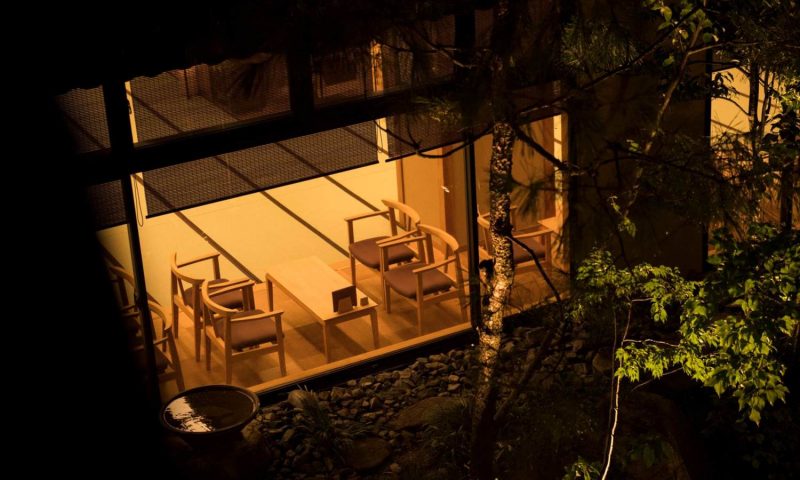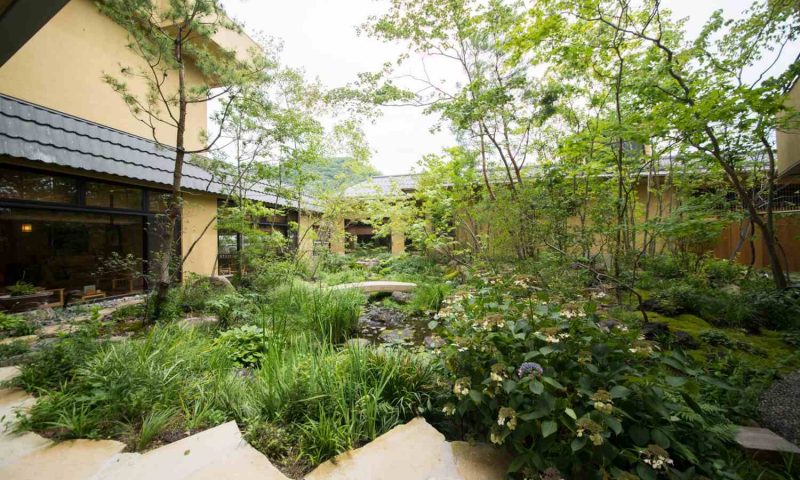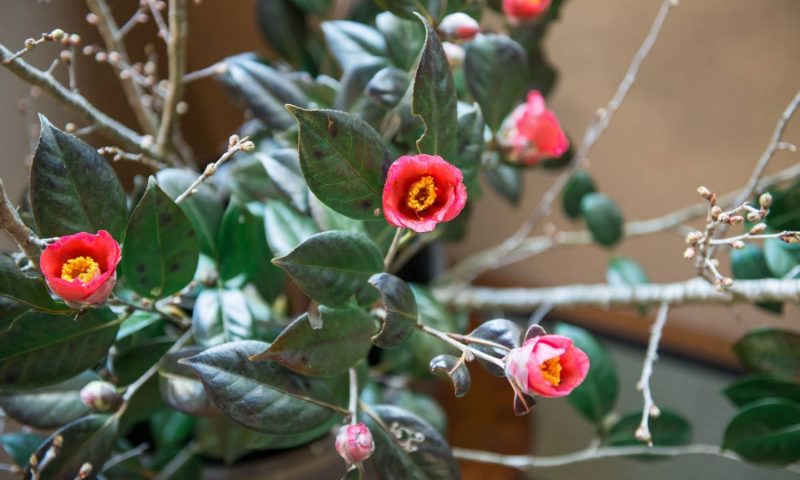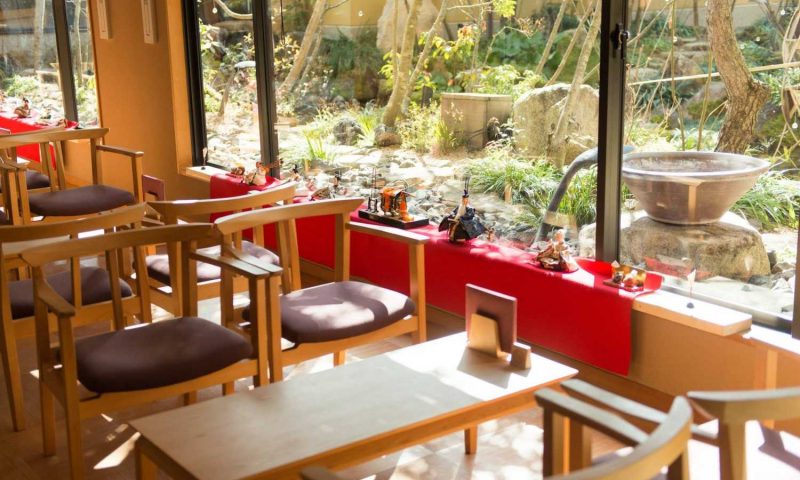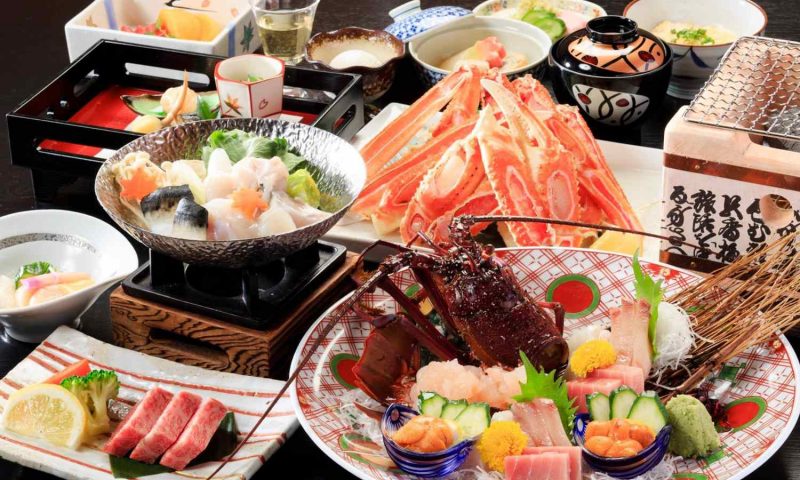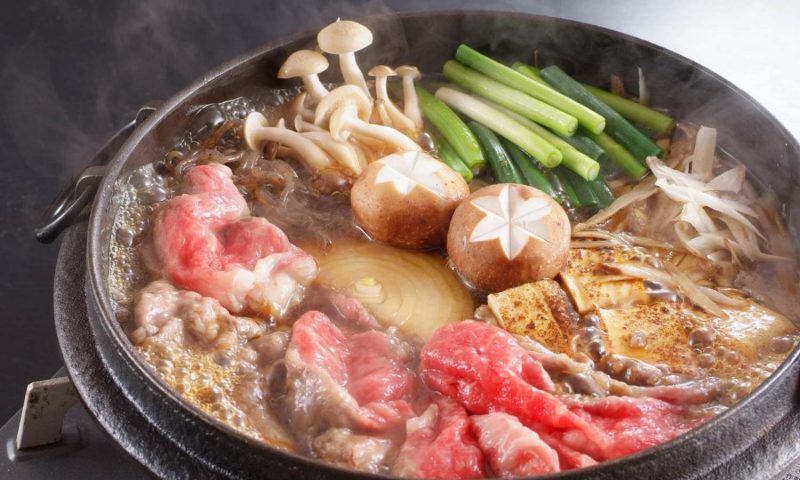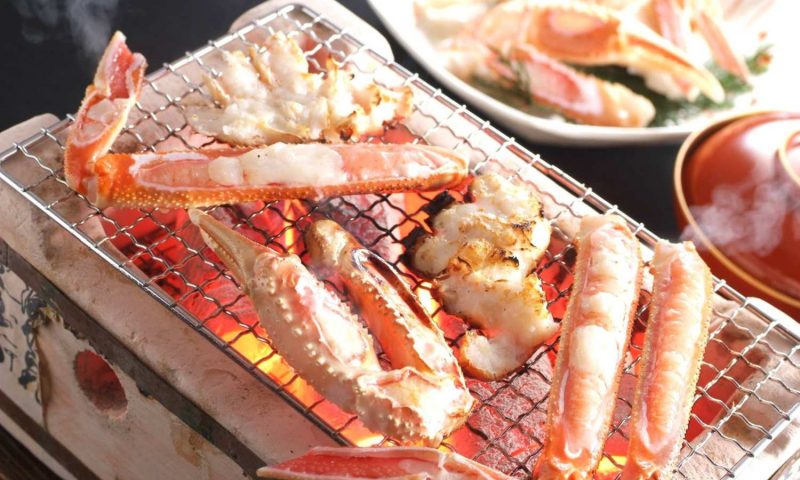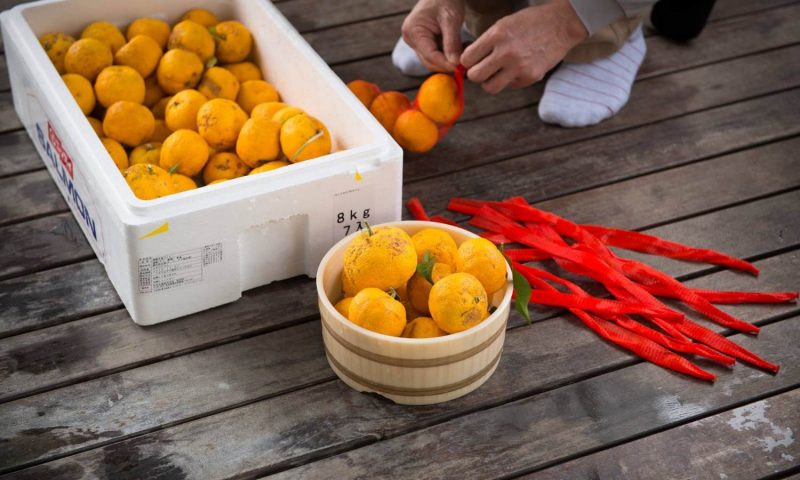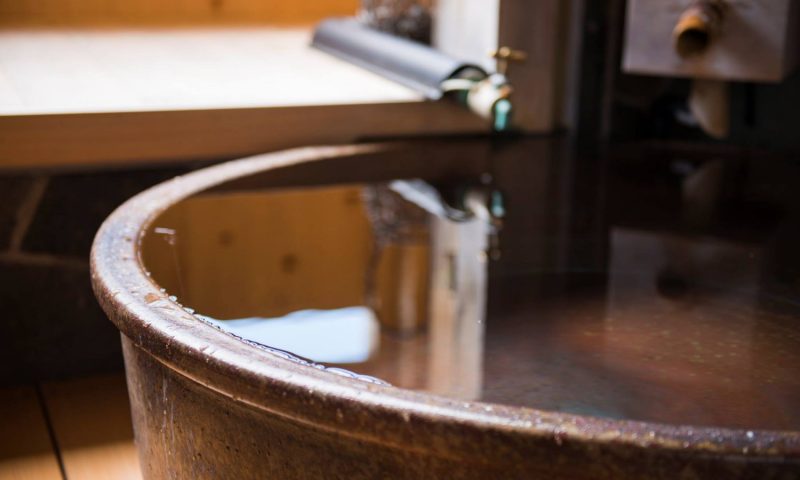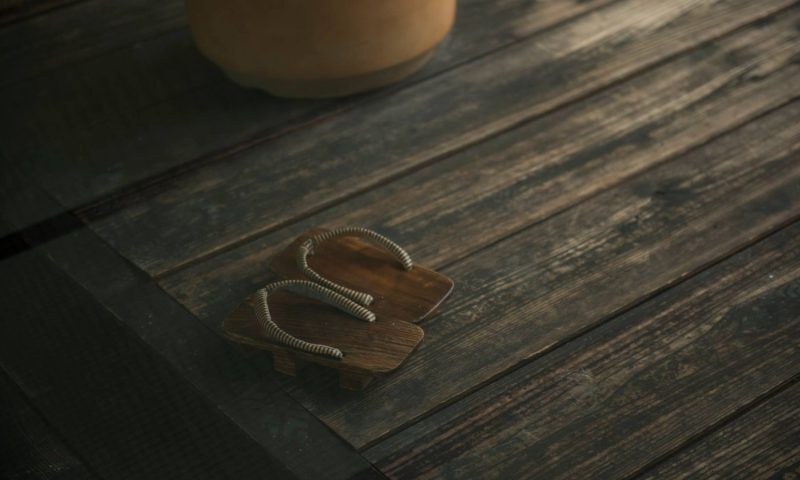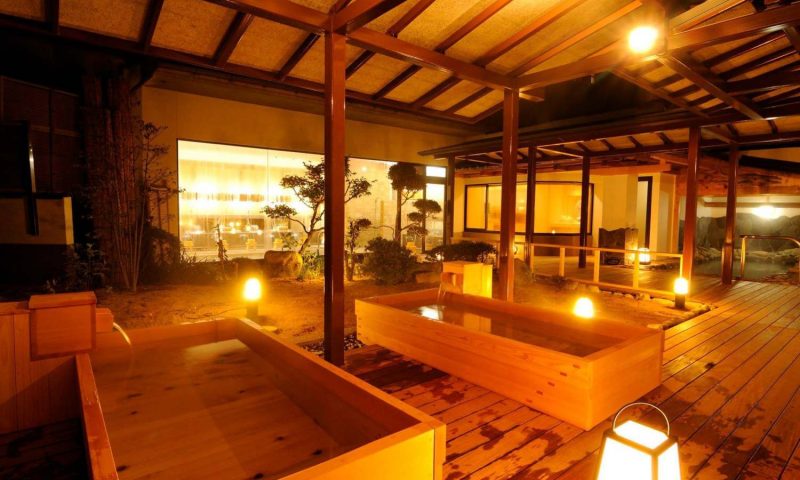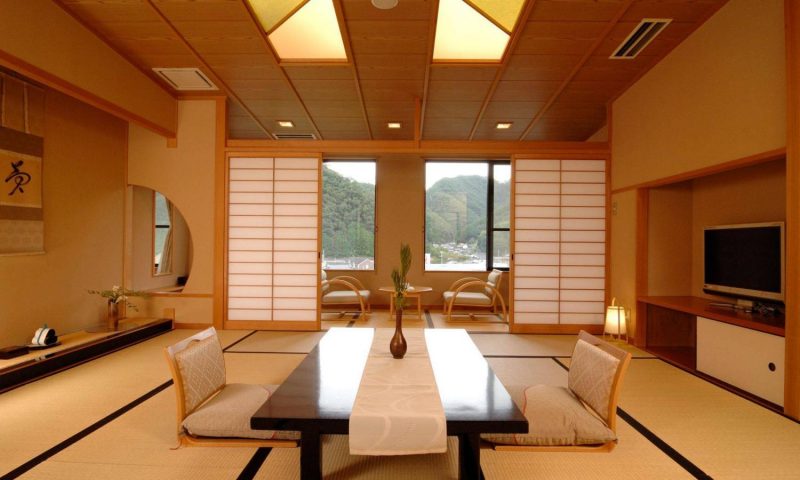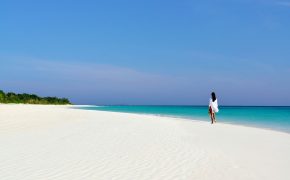Yunogo Onsen, known for its healing and beautifying-skin properties, has more than 1,200 years of history. A good long soak in a hot bath directly filled from the gushing mineral waters is said to naturally heal your cuts and scratches.
In addition, seasonal flowers grace the space throughout our ryokan and exquisitely presented seasonal dishes are what set us apart. Melt your aches and pains away in our therapeutic hot baths, and revive your very being with our flowers and cuisine. We hope you will have a blissful time with us at Kifu no Sato ryokan.
We offer a traditional Japanesel kaiseki haute-cuisine course meal prepared with a wide range of fresh local seasonal ingredients. There are three different types from which you can choose.
Feel right at home in the ageless atmosphere of simplicity and tranquility of our traditional Japanese rooms where the picture scrolls and flower arrangements create a sweet melody throughout the seasons. The aroma of the wooden furnishing will invite you to deep relaxation.
Yunogo Onsen is widely known for its beautifying mineral water and is one of three historical onsen towns in Okayama Prefecture. We offer four bath houses and a rare natural-stone sauna within our establishment for your comfort and relaxation.
The spirit of Kifu No Sato
Many of our guests praise our flower arrangements saying how delightful to see them reflecting the natural world outside. The appreciation for nature, I believe, has been nurtured in our family and handed down generation after generation. It’s in our DNA to respect nature and appreciate its beauty as it is.
I have a story to tell you to illustrate the point. Many of our gardens are designed in a traditional Japanese style. One of them had a few dandelions blooming in it. Strictly speaking, they would have to be removed to make the garden look “perfect” as the dandelions are considered as a type of weed.
When I consulted with my mother, our proprietress, she said, “it’s better to leave them there.” At that very moment, I understood very clearly the value our ryokan places on this ideal.
This sense of non-perfection but something warm and down- to- earth is what I want my guests to feel whilst treating them with utmost courtesy and respect. This is the core value and will always be the source of inspiration for Kifu no Sato.
Rooms & Suites
Feel right at home in the ageless atmosphere of simplicity and tranquility where the picture scrolls and flower arrangements create a sweet melody throughout the seasons. The aroma of the wooden furnishings will invite you to deep relaxation. This is your home away from home.
Nojikiku (Japanese Daisy)
The bath in the suite was created with your ultimate comfort in mind. Though not an open-air bath in the traditional sense of the word, the window facing the garden can be opened, so regardless of the weather, you can enjoy the fresh air. As such, you can have a deep soak to your heart’s content in the hot bath filled from the natural spring whose quality is said to be the best in Western Japan.
The guest room was designed to look like a traditional deck attached to the house on which you can enjoy the view of the Japanese garden with the Chugoku mountain range as its background. Highly recommended for it is the best space to revel in the seasonal changes unique to our area.
Miyako-Wasure (Gymnaster)
This suite’s unique design to fit the indoor bath right next to the bedroom attracts couples and families. You can enjoy each other’s company whilst staying in your preferred space. It’s a perfect set-up for a leisurely bath time.
Moreover, having the two styles of living rooms together allow even a large group of guests to feel uncrowded and comfortable. Another essential fixture of the suite is the exquisite flower arrangement piece which is the largest in our inn. Enjoy the elegant fusion of refined Japanese style and the sophisticated modern taste that this suite creates.
Japanese-Style Room
The Japanese passion for the sukiya architectural style started when the popularity of the Way of Tea was at its height. The word sukiya indicates not only the style of a Japanese room but also suggests one’s playul mind/hospitality.
The owner chooses every one of the tea ceremony elements, its equipment, a picture scroll, ceiling panels and pillars for this space with the intention of entertaining and communicating his or her hospitality to the guests. That’s how the culture of Japanese communication has been nurtured and refined over time.
Cuisine
Our finest seasonal cuisine is prepared with local natural blessings to capture and showcase the best each season has to offer from the Seto Inland sea, the Sea of Japan, and the mountains. Yunogo Onsen is located in the mountainous region between the Seto Inland Sea and the Sea of Japan, about one and a half hours from each coast.
Every morning, the first catch arrives by truck in a fresh water tank loaded. The easy access from both the Okayama and Tottori ports has brought forth a new culinary culture into the mountanious areas in recent decades. We offer three types of kaiseki multi-course meals for you to choose from to suit your preferences.
Standard Seasonal Kaiseki Course
Our master chef’s layers of techniques highlight the natural flavours of the seasonal local ingredients to maximum advantage. It is a complete work of art. If you have trouble choosing the course, this is our recommendation.
It consists of around 10 dishes made with a combination of fresh ingredients unique to the area from both the sea and the mountains. The Standard Seasonal Kaiseki course has satisfied a wide range of guests.
Luxurious “Zei no Gozen” kaiseki course
Perfect for marking anniversaries and making your stay extra special. This popular course features local delicacies representative of each season such as abalone and premium quality beef, all of the freshest and highest quality. Each dish from the start to the end is thoroughly luxurious.
Exclusive Chiya Beef Fillet Steak Kaiseki Course
Looking at its physique and level of fat, it is said that Okayama’s Chiya beef is the root the Japanese cattle (Wagyu beef). Because this type of cattle is extremely low in number, we recommended this to you because of how rare it is. Furthermore, within a few places you can try this; you can only experience high class fillet steak kaiseki at Okayama, Yunogo Onsen.
Winter luxury fugu (pufferfish) dinner course
Fugu is unlike any other fish. It is odorless and not heavy like meat. It is easy to overeat if you are not careful. Our chef who is an expert with this delicacy, will prepare you a luxurious course meal to make your stay extra special.
Autumn Luxury – Everything Matsutake mushroom course
The thought of eating much-sought-after Matsutake mushrooms never leaves one’s mind during the autumn season. Not only do we offer a grilled Matsutake mushroom dish and a sukiyaki featuring this delicacy, but also a shabu-shabu with the mushroom and dagger-tooth pike conger eel. You will experience bliss savouring this taste of autumn which evolved from a rather simple steamed-pot dish.
Onsen/Hot Spring
One of Japan’s most celebrated healing hot spring baths with over 1,200 years of history. The healing mineral content of the waters in Yunogo is said to be NaCa chlorides containing nitrogen gas. It is slightly alkaline and apparently very rare, being one of only three such hot springs in the world.
Tiny bubbles in the waters stick to you skin to keep you warm which makes it possible for you to have a long soak in a bath filled with water which is lower in temperature than usual.
Our natural spring water boasts healing properties which can treat cuts and scratches completely after several dips in the bath. Yunogo Hot Spring has been known locally for its healing power since ancient times.
Many people have a dip a couple of times a day to make the most of the waters’ beautifying and therapeutic effects. Have a leisurely soak in our ryokan’s large public baths and private baths attached to the guest rooms, as well as in a hidden Yunogo neighbourhood hot spring.
Even the locals are impressed by the beatiful starry night of Yunogo saying, “It feels like we are on the top of a mountain or floating on the sea!” A steamy soak in an outdoor bath with a stunning view of the garden will give you a deep sense of gratitude for being in Japan.
It is a grand public bath with a floor-to-ceiling window through which you can view the garden whilst taking a leisurely soak. The granite for the flooring is from the Northern Okayama area. It was chosen for its look as well as for better grip to prevent slippage.
Therapeutic sauna “Yakuseki-mushiburo”
Our sauna is favoured especially by our female guests. As it is only heated up to 45℃, there isn’t much burden on the body. The room is laid with 13 kinds of natural mineral stones whose qualities radiate a healing power in all directions. It is effective for skin cleansing, detoxification and said to improve back and joint pain and boneache.
Private open-air hot spring baths with your loved ones or for special occasions
Recommended for a more peaceful and private time with your loved ones. Both the elegant rock bath and the local granite bath provide seasonal garden views.
Warming up together under the starry night sky helps to remove barriers and improve communication. Have a comforting experience in our private rotenburo open-air bath in the mountainous town of Yunogo.
Café/Rest Area “HANARONDO”
An enticing aroma of roasted coffee beans may envelop the reception/foyer area around check-out time. Our original blend coffee on the menu is served in a locally- crafted Bizen-pottery cup.
Favoured not only by children but also by ladies after a soak in a bath is a soft-serve ice cream in a cone as well as freshly prepared fruit juice. You can surf the net here accessing the free wifi. Feel free to use the space for work and research sitting at our hand-crafted table.
Souvenir shop “HANAKAGO”
Though the space is limited, we have an array of handmade souvenir items selected with great care for their quality and taste . Bizenware among other craft items represent the high level of local craftsmanship. Food items range from ones to give away to those consumed at home or straightaway on transport back home.
A selection of sake on display includes the locally produced brand made from the legendary Omachi rice. A range of jam and pickles to pick from and toys and key chains for children. Also popular beauty products include the local Yunogo Onsen brand mist spray bottle, soap bars and shampoo bottles.
Karaoke room ”Kodemari”
It is for 2-15 people and run by first-come-first-served booking system. There is also an entertainment complex nearyby where you can enjoy bowling, karaoke and playing games.
Beauty Treatment Room “Megumi”
Our treatment room offers a range of body/facial massage menus to unwind and balance your skin. Foot massage covers from the toes to the inner thighs. The upper body from the waist, shoulders and arms.
The facial menus treat the face and the scalp. We have a wide range of devices and equipment to provide ultrasonic wave treatment, anti-oxidant masssage, the Chinese herbal CO2 facial mask and micro collagen nourishment to revitalise your skin.
The birthplace of Miyamoto Musashi
Not far from Yunogo, you will find the birthplace of the samurai Miyamoto Musashi, one of the most intriguing characters in Japanese history.
There you will be treated to an iaido (sword drawing) demonstration by Trevor Jones, a British exponent of the art and holder of the 7th Dan grade who will also talk on the history and spirit of samurai sword arts. Around this area, you can see the Musashi birth home, grave and memorial shrine, a museum, dojo and budokan (martial training halls).
Miyamoto Musashi, warrior, artist and scholar
“It is said the warrior’s is the twofold Way of pen and sword, and he should have a taste for both Ways. Even if a man has no natural ability he can be a warrior by adhering assiduously to both divisions of the Way. Generally speaking, the Way of the warrior is resolute acceptance of death.” From the Earth Chapter in the Book of Five Rings
Miyamoto Musashi (1584-1645) was a swordsman who was born in Miyamoto village (now part of Mimasaka City) at a time of great political and social upheaval. He devoted his life to the sword and remained undefeated in over sixty duels.
He was the founder of “niten’ichi ryu”, a style utilizing both swords at once. He was also an accomplished artist, sculptor and calligrapher and is the author of The Book of Five Rings, a treatise on strategy, tactics, and philosophy that is highly regarded and still studied to this day.
Gorinbo Restaurant/Honjin Meal
To further appreciate the history of the samurai, you will be able to try a meal as eaten by the warlords at the 400 year-old travel lodge which still stands on a street nearby, which was an official travel route during the Edo period.
Tsuyama
Tsuyama City flourished once as the capital of Mimasaka Province, and is now a quiet and charming castle town. Tsuyama Castle was one of the most well-fortified castles ever constructed in Japan. Though the castle itself is no longer standing, there remains a great set of fortifications with commanding views of the city below.
The Bitchu Yagura (Turret) has been reconstructed (completed in 2005) using traditional materials. The castle is famous in western Japan as a cherry blossom viewing site.
This makes early April the best time to visit, as at this time people hold hanami parties under the spreading boughs of the cherry trees, which make the castle grounds and the tower look as if they are wrapped in blossom.
There are many quaint little shops on the historic Joto Street and the Shuraku Garden, though small, has elegant scenery reminiscent of the 17th Century.
As of August 2013, Joto Street has been designated an Important Preservation District for Groups of Traditional Buildings. Other traditional activities that can be enjoyed in Tsuyama include kasuri cotton weaving and paper-making.
Himeji Castle
Himeji Castle, in Hyogo Prefecture, is a UNESCO World Heritage Site. It is 400 years old and is the only castle in Japan to retain its original wood and plaster construction. Its beautiful lines give the impression of a bird in flight, hence it is known as the “White Heron Castle.” The castle went through a six-year Y2.4bn (£12.4m) restoration which finished in 2015.
Site of Takeda Castle
The remains of this 15th century mountain-top castle can be found in the north of Hyogo Prefecture. It is nicknamed the “Castle in the Sky” because low cloud gives the impression of floating in the air. It is highly rated by visitors for the condition of its remains and spectacular view.
Bikan Area
Although Kurashiki is a modern city, it contains an area of 17th century buildings with distinctive white walls and black tiles. This Bikan area is popular for tourists and art aficionados who frequent the Ohara Museum of Art.
Ohara Museum of Art
Founded in 1930, Ohara Museum of Art is the oldest private museum featuring Western art in Japan. The museum, awarded two Michelin stars in 2007, displays works mainly from the French Impressionist period (including Monet, Pissaro and Gauguin), as well as modern and contemporary Japanese art.
Mitaki En
A restaurant/cafe/shop with buildings featuring a sunken hearth under a thatched roof and 360-degree views. Set in a tranquil spot broken only by the murmur of the river and the song of birds, take a step back in time as you wander through the woods and enjoy Japanese country cooking or refreshments. The meals are traditional-style created from local produce such as mountain vegetables,rainbow trout and game.
Adachi Museum of Art
As a museum of modern Japanese art, it has a collection of approximately 1,500 of the country’s most highly regarded paintings. Set in a beautiful natural environment, its stunning Japanese gardens have been awarded three Michelin stars and rated No.1 in Japan for for the 17th consecutive year in 2019 by the American “Sukiya Living” Journal of Japanese Gardening.
Izumo Taisha (Izumo Grand Shrine)
A Shinto shrine of unknown age, but first recorded in the 8th century, is in Izumo City in Shimane Prefecture, north of Okayama. It is designated a National Treasure of Japan and is one of the most important Shinto shrines dedicated to the deity of marriage. After the shrine, why not try the local Izumo soba (buckwheat noodles) found in many of the local restaurants.
Sake
Okayama be known as the No.1 producer of the Omachi sake rice, which they said to be the ultimate and the most difficult type of sake rice to produce. There are basically two types of sake. One is for drinking and the other is for enjoying its fragrance.
Omachi sake rice produces the best quality sake that falls into the latter category. When you come to Okayama, please try the Daiginjo sake which only uses rice 50 % polished away. We believe sake definitely is the most suitable accompaniment for Japanese dishes.
